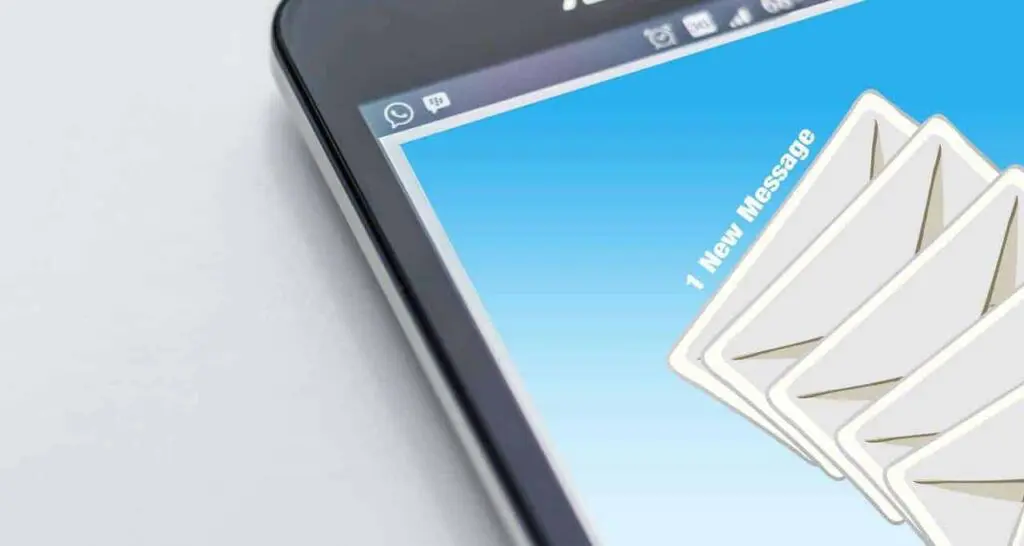
Do you have a business blog? I feel strongly that creating new, original content is one of the best ways to drive new traffic to your site, and help you establish Expertise, Authority and Trust with your audience, also known as EAT.
If you have a blog, or if you’re thinking about writing one, you should also consider offering email sign ups for your blog. Why do that? Recently, I wrote a post about how blog readership has changed over the years. It used to be that people would login and read blogs routinely, but way folks consume content these days is different.
As a result of this, it’s important that you make sure to allow your readers to consume your content in whatever way is most convenient for them, or else you run the risk of losing readers. That means that you should be sharing your content on social media for people who hang out there, and you should also be emailing your content to them, if that’s how they want to get it.
There are a few ways to do this, but I’m going to share three ways which all have pros and cons. Note that these are not the *only* way to offer email subscriptions to your blog. Just a few options.

Jetpack
This is by far one of the easiest ways to offer email subscriptions to your website. You can install the Jetpack plugin, free in the repository. One of the many offerings included are blog subscriptions. The first thing that happens when you enable this is it gives your commenters an option to not only get notified if someone responds to their comments, but to sign up to know of new blog posts as well.
Then there’s also the option of adding a widget, which you can put into your sidebar if you have one. Don’t have a sidebar? No problem. You can use the Jetpack Subscription block right in the Gutenberg editor to each post, to make sure everyone sees it.
The pros of this are that it’s super easy to do. The cons are that you can’t style or schedule the email, it goes out when you hit publish and if you find a typo later, those emails are already gone. And they all look the same as every other blog that uses Jetpack for email subscriptions.
Feedburner
Feedburner is web feed management provider created by Google that provides custom RSS feeds and tools for blogs. It’s easy and free to set up a Feedburner account.
Once you set up your account, there’s a Publicize tab that has a place to set up email subscriptions. They provide you a snippet of code that you can put in a Gutenberg block, in a widget in your sidebar, or even in your template if you want. All those subscribers will be stored in your Feedburner account, and when you publish a new post, a new email is generated and goes out to your subscribers.
The pros of this kind of set up is that it’s pretty easy, although slightly more steps than Jetpack, but it also lets you brand your emails and pick the time of day the email goes out. With Jetpack, the instant your post is published the email goes out, but with Feedburner, you can pick the time of day they go. If you pick 10 AM, and you publish at 9, that gives you an hour to catch those typos. The cons are that it could be discontinued by Google. They do cancel stuff from time to time without much notice (ie: Google Reader, Google Authorship, Google Plus) so it’s possible you could change have to make a change down the road. It’s also a little harder to set up and manage than Jetpack.
MailChimp
MailChimp may not be the easiest option, but it’s my favorite because it has the most options, but it also has more steps and requires a little more management.
What I like most about MailChimp is that it allows me to grow and manage my list, choose whether I want to send my posts as they are published or in a weekly digest, and it gives me complete design control over the emails.
To set it up, first you need a MailChimp account. These are free up to 2,000 contacts, so it’s possible you could never pay for it. Once you have an account, you’ll need to create your list. This is the list your subscribers will be on.
Next step is to add the sign up to your website. You can either just copy the code they give you and paste it into an HTML widget or block on your site, add it into your template, or use one of the many MailChimp plugins available. There’s even a plugin that gives you a MailChimp block for Gutenberg. That’s step 1, it allows your subscribers to sign up.
Next you have to create the campaign. In your MailChimp account, you will create a new RSS campaign. They do a pretty good job of walking you right through all the steps. You’ll pick whether you want to send daily or in a digest, pick the list the emails go to, and you have to design it or use one of the pre-made templates. But once you’re done, MailChimp will pick up your new posts and send them out to subscribers automatically.
It also gives your subscribers an easy way to opt-out if they want, which is important.
Other ways
Are there other ways? Oh yeah. Lots of them. Plenty of newsletter programs offer RSS to Email options. And I’m positive there are plenty of ways to do it too. These are three that I’ve used and are easy and successful.
It’s important to offer your readers a chance to consume your content in a way that works for them. Remember that it’s always about your customers’ needs, and not your own needs. Setting up a blog subscription may take more time and be more hassle for you, but if it leads to more subscribers, then it will have been worth it.
Amy Masson
Amy is the co-owner, developer, and website strategist for Sumy Designs. She's been making websites with WordPress since 2006 and is passionate about making sure websites are as functional as they are beautiful.

Good stuff Amy. Your site looks great. I used Feedburner in recent years but worry they’ll pull the plug one day, so I love Mailchimp and have used it for Newsletter campaigns. Now I want to try the RSS campaign you outline here. Two questions for ya:
1. Can you present readers with option of how often they receive the updates?
2. Do you just stick to the RSS campaign I see on this page or do you also run a newsletter signup as well.
Thanks!
Thanks, Clay! I, too, fear that Google will take away Feedburner like it did Google Reader. So that’s definitely a thought in my mind.
For your questions, I have answers.
1) Sadly, you can’t give options. It’s sent once a day (you can set a time preference) and will compile all the posts that you have written in the past 24 hours.
2) I have set up many newsletter campaigns for clients, but for this site, I am only using the feed subscription (which is through Jetpack.)
Thanks!
I appreciate the answers. Thank you.